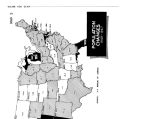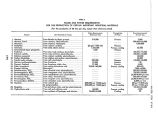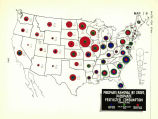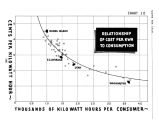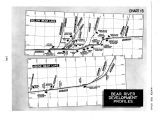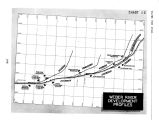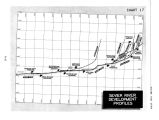| OCR Text |
Show WATER FOR UTAH ... More Water in the Bonneville Basin .... More Wealth for the State The economic benefits to farmers of Utah and to society at large from the potential development of these additional water supplies and land would result in substantial increases in the production of farm products. By such potential development of additional irrigation water, it is estimated that the total crop production of the State of Utah would be increasd at least 70%. This increase would be realized in part from new lands and in part from lands which would receive supplemental water, since some of these lands now produce dry- land crops, all of the production from new lands may not be a net gain. Changes to more intensive crops and changes in farming practices, as well as increased yields of the same crops, would also contribute to the total change in crop production. The desirability of the transfer of water and the relative advantage of Utah's Bonneville Basin area is more clearly shown in the following table. ( See Table 4 - Average Gross Value per Acre of Irrigated Crops in the Upper Colorado River Basin and in Proposed Areas where Colorado River Water Might Be Used by States Through Transmountain Diversions, 1939 - below.) The average value per acre of all irrigated crops was $ 13.58 in the Upper Colorado Basin in Utah and $ 28.61 in that part of the Bonneville Basin to which it has been proposed Colorado River water be transferred. This is a gain of TABLE 4 AVERAGE GROSS VALUE PER ACRE OF IRRIGATED CROPS IN THE UPPER COLORADO RIVER BASIN AND IN PROPOSED AREAS WHERE COLORADO RIVER WATER MIGHT BE USED BY STATES THROUGH TRANS- MOUNTAIN DIVERSIONS, 1939 $ 15.03, or more than the value now obtained in the Colorado area. The value of crops in the Bonneville Basin was higher than in any of the adjacent states. On those lands in the Bonneville area which had a full water supply, the average value of crops per acre undoubtedly was much higher than the average for all irrigated lands. ( See Chart 9 - Gross Value per Acre of Irrigated Crops- 1939 - in Upper Colorado River Basin States and in Counties in Those States Where It Is Proposed to Divert Colorado River Water - page 31.) With an increase of 70% in crop production, it is to be expected that there would be an increase of at least 60% in the number and production of farm livestock. However, the increase in the number and production of range livestock would be much less, probably about 20%. This increase in range livestock would result from better feeding and breeding of young stock. The result may be a smaller increase in numbers than in production, but the gain would be mainly in larger calf and lamb crops. The over- all increase in agricultural production crops, farm livestock and range livestock is expected to be about 60%. This increased production would go to market largely as feeder cattle and lambs, with some grass- fat and a few semi- finished in the feed lot and milk cows for the California whole milk market. There would also be wool, dairy products, poultry products, sugar, ( H. E. Selby, Agricultural Economist, Office of the Secretary U. S. Department of Agricu Iture) State Upper Colorado Basin Proposed Diversion Areas Irrigated i Crop Value Gain Irrigated Crop Value by Acreage per Acre Acreage j per Acre Transfer 1,000 acres Dollars 1,000 acres Dollars Dollars Wyoming _ 267 6.60 173 18.95 12.35 Colorado 671 19.38 1.202 23.28 3.90 New Mexico 27 20.651 71 18.38 - 2.27 Utah 205 13.58 521 28.61 15.03 ' San Juan area which lies partly in Utah and partly in Colorado. [ 32] |















